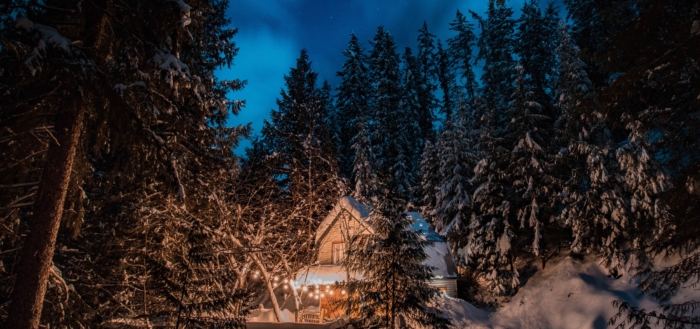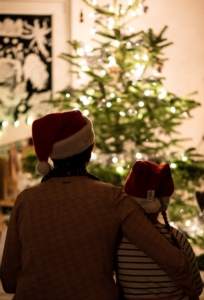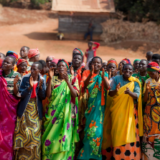In the world of nowadays, globalization has brought cultures together, allowing countries to share their traditions outside the borders and borrow customs from all around the globe.
However, there are still numerous aspects which keep cultures distinct from one another, contributing to their uniqueness and particularity. While most countries celebrate Christmas, traditions vary from one territory to another, marking the different folkloric backgrounds in which Christmas tales are rooted.
Few legendary figures can compete in popularity, especially among children, with the iconic Santa Claus, whose arrival is expected all around the world with eagerness and enthusiasm. Despite being often depicted in a red suit, carrying a sack of presents over his shoulders and traveling great distances together with his flying companions, Santa Claus changes his name, deeds, and even appearance at almost every border he encounters in his annual journey.
Let’s explore some of the most fascinating names the “jolly good fellow” goes by in different locations of the world. While you may find some of the names familiar, we are fairly certain that others will surprise you.
1. Europe
While some countries are more reluctant to change their customs according to the influence received from outside, some others borrow and incorporate foreign traditions into their own. It is the case of The Netherlands, where Sinterklaas (Saint Nicholas), the patron saint of children, has been celebrated since the eleventh century. His story was borrowed by the United States, where Sinterklaas became Santa Claus, version which travelled back to the Dutch territory under the name Kerstman (Christmas man).
Similarly, Weihnachtsmann (Father Christmas) is the German adaptation of the American Santa Claus and represents a more secular figure compared to Christkind (Christ Child), a character depicted as an angel with Christ-like qualities, which evolved as an alternative to Saint Nicholas.
In other countries, the versions of Santa Claus differ from one region to another. Such an example is Spain: if in Catalonia children expect to receive presents from Papá Noel (Father Christmas) and the Tió de Nadal (the Christmas Log), in the Basque region they are waiting for Olentzero, in Galicia for Apalpador, and in Cantabria for Esteru. Both Olentzero and Apalpador are solitary characters from the mountain tradition who work on making charcoal; they symbolize the end of the year and the birth of new times.
In Belgium, Père Noël brings presents to French speakers, while Kerstman visits Dutch speakers. Both names mean Father Christmas. The Icelandic folktales, on the other hand, set a record by telling the story of thirteen Santa Clauses, named Jólasveinar (Yule Lads), mountain-dwelling characters and trolls who arrive to town between the 12th and the 24th of December. Each of them settles in town for 13 festive days.
Another particular tradition has its home in Italy; besides the arrival of Babbo Natale (Father Christmas), the Italian folklore tells the story of Befana, an elderly woman who delivers gifts to children on the night of January 5.
Here are some other examples of names for Santa Claus in the European region:
- Père Noël, France (Father Christmas)
- Święty Mikołaj, Poland (Father Christmas)
- Agios Vassilis, Greece (Saint Basil)
- Ježíšek, Czechia (Baby Jesus)
- Jultomten, Sweden (Christmas Gnome)
- Julenissen, Norway (Christmas Goblin)
- Moș Crăciun, Romania (Old Man Christmas)
- Julemanden, Denmark (The Yule-Man or The Christmas-Man)
- Joulupukki, Finland (Christmas Goat)
- Father Christmas, United Kingdom
- Samichlaus and his companion Schmutzli, Switzerland (Santa Claus)
- Pai Natal, Portugal (Father Christmas)
- Christkind, Austria (Christ Child)
- Tovlis Babua, Georgia (Snow Grandfather)
- Dyado Koleda, Bulgaria (Grandfather Christmas)
2. North America and Oceania
While Santa Claus is the most common name in these regions, Father Christmas is also being used in Australia and New Zealand. Besides Santa Claus, Père Noël is used by French speakers in Canada. Both in the US and Canada, Santa goes occasionally by the name of Kris Kringle, which derives from the German word Christkind (Christ child).
3. Latin America
Across South America there is a secular Santa Claus, Papá Noel , and a religious alternative, Niño Dios (God Child). Similarly to Christkind in Germany, Niño Jesús represents a personification of the baby Jesus. If in Germany Christkind came to represent an angelic figure, in Latin America people remained committed to the original concept.
Papá Noel is a character borrowed from the US, as the authentic gift-givers in Spanish culture were Los Reyes Magos (The Three Kings). While Niño Dios is especially common in countries like Colombia, Costa Rica, and Bolivia, other states use different variants of the same name: Papai Noel (Brazil), Viejo Pascuero (Chile), Santa Clós (Mexico, Puerto Rico, Venezuela), Papá Noel (Peru, Paraguay, Ecuador, Argentina).
4. Africa and Middle East
Not all the countries in Africa and the Middle East celebrate Christmas, but in the ones that do, Papá Noel is the most popular name for Santa Claus. In South Africa, three name variants are being used – the Dutch Sinterklaas, the English Father Christmas, and the American Santa Claus. Although Turkey is a Muslim country where Christmas is not celebrated, there is still a Santa Claus equivalent there; he is called Noel Baba (Father Noel) and he brings presents to well-behaved children during the New Year’s Eve, considered a major holiday celebration in Turkey.
5. Asia
In most of the Asian countries, Christmas is a tradition which has been adopted from the Western culture, with little to no prior celebration. The period in which this custom appeared across Asia varies from state to state, depending on the political and religious specificities of each territory. For example, if China started celebrating Christmas in December 1949, Japan recorded its first manifestation of this tradition in 1549. The Japanese Christmas customs have had an unstable status for centuries, as they were banned and reintroduced multiple times, along with other Christian traditions. However, it wasn’t until 1875 that Santa Claus made his first appearance.
In Japan there are actually two Santa Clauses: Santa Kuroosu (サンタクロース), a Japanese adaptation of the American Santa, and Hoteiosho (ほていおしょ), a Buddhist monk who brings presents to children on New Year’s Eve. In China, Santa is named Shengdan Laoren (the Old Man of Christmas) and is translated 聖誕老人 in Traditional Chinese, 圣诞老人 in Simplified Chinese, Sing daan lo jan in Cantonese and Shèngdànlǎorén in Pinyin. In India, there are several variants of Santa Claus as well, namely: Natal Bua (Christmas Old Man) in Marathi, Christmas Thatha (Christmas Grandfather) in Tamil, and Christmas Pappa (Christmas Father) in Malayalam.
Despite the different names, deeds, and appearance attributed to Santa Claus and the various Christmas traditions that make cultures unique, one aspect connects them all together: rewarding good people, which has been part of the Christmas folklore for thousands of years. Therefore, we are sure that children from all around the world have already written their Christmas letters this year and they are waiting impatiently for the magical, jovial character to visit their homes.














